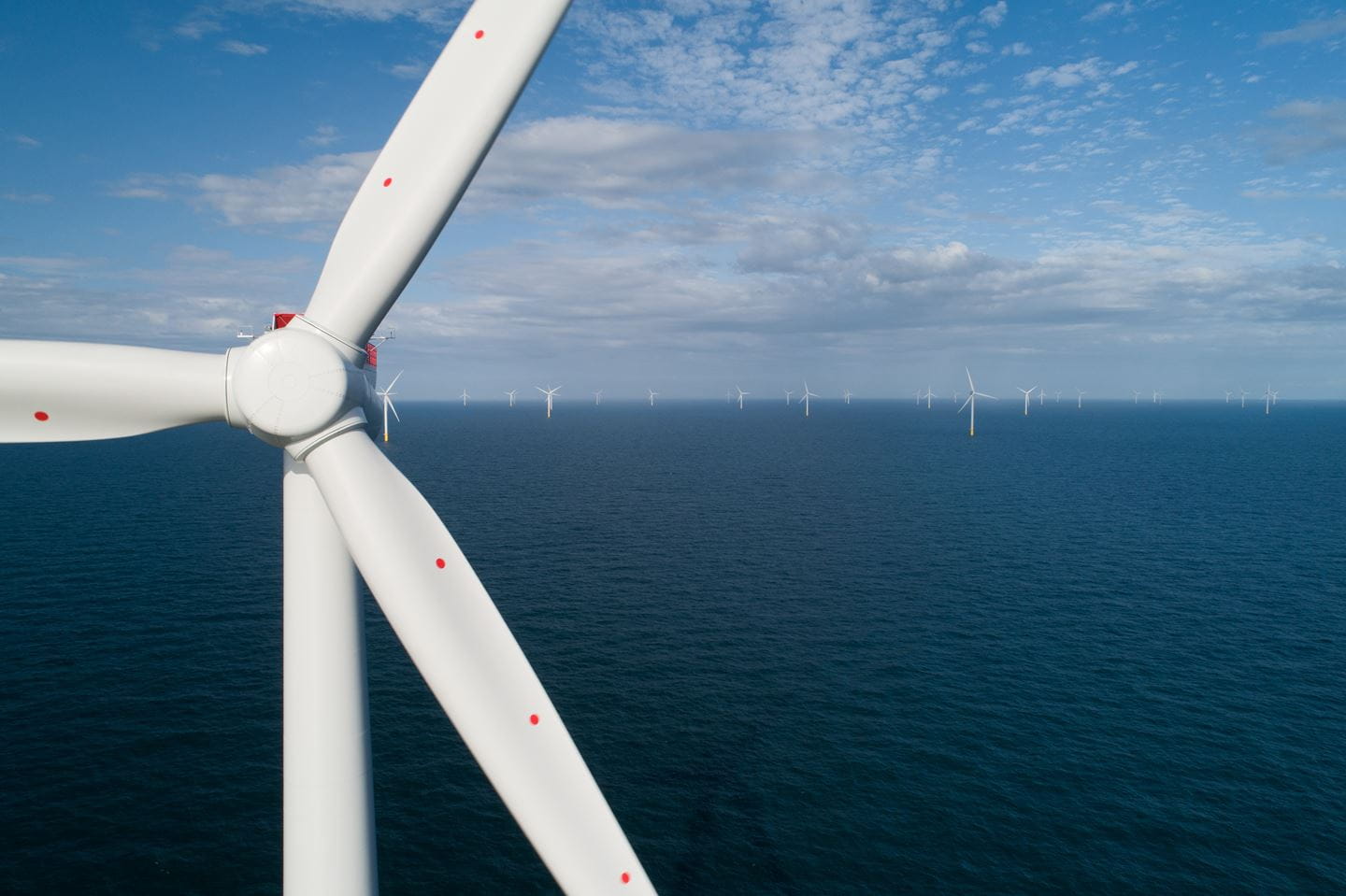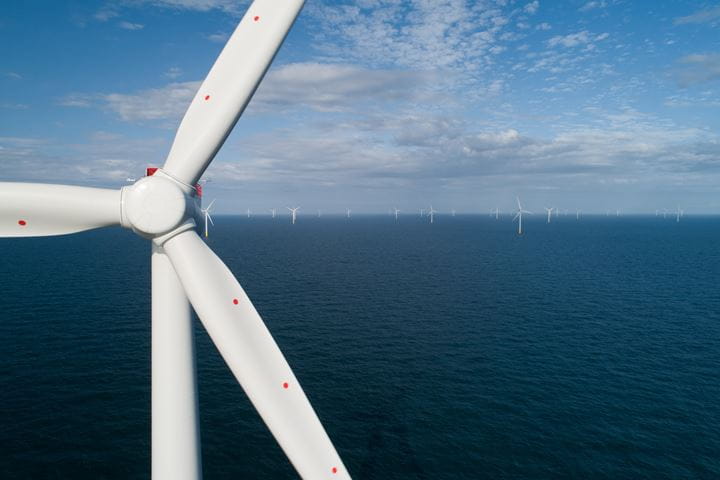- On World Ocean Day, OREAC has announced its vision for 1,400 GW of offshore wind by 2050 to drive decarbonisation and green recovery from the COVID-19 crisis.
- 1,400 GW of offshore wind could power one-tenth of global electricity demand, save over 3 billion tonnes of CO2 annually, and create around 24 million years of employment (defined as full-time work for one person per calendar year) by 2050.
- The offshore wind industry has grown by over 30 per cent in the last decade, with 30 GW of capacity installed today across the world. The sector’s success to date has been anchored in collaboration with policymakers and other ocean stakeholders to deliver good outcomes for all.
- Later this year, OREAC will launch its report outlining the actions needed to support industry and policymakers in achieving the 1,400 GW vision. The report will address offshore wind’s socioeconomic benefits and role in mitigating climate change; policy, infrastructure and market frameworks which enable sector growth; safety considerations; environmental planning; the importance of colocation and coexistence with fisheries and other marine uses; and other ocean-based renewable energy technologies.
8 June 2020, London – On World Ocean Day, the Ocean Renewable Energy Action Coalition (OREAC) has announced its vision for 1,400 GW of offshore wind globally by 2050 to drive decarbonisation and a green economic recovery from the COVID-19 crisis. This ambition goes beyond current offshore wind forecasts, but is entirely achievable considering the resource potential, technology innovation, and government appetite to position offshore wind at the centre of the global energy transition.
OREAC was formed in response to the 2019 call for ocean-based climate action by the High Level Panel for a Sustainable Ocean Economy (Ocean Panel), and represents ocean energy in the global dialogue on a sustainable ocean economy. The Ocean Panel is a unique initiative of 14 serving world leaders working with diverse stakeholders to accelerate bold, pragmatic solutions for realising a sustainable ocean economy.
OREAC is spearheaded by Ørsted and Equinor, and includes other major players in the global offshore wind industry: CWind, Global Marine Group, JERA, MHI Vestas, MingYang Smart Energy, Mainstream Renewable Power, Shell, Siemens Gamesa Renewable Energy, TenneT, and GE Renewable Energy. Additional partner organisations include Global Wind Energy Council, World Resources Institute, UN Global Compact, the Chinese Wind Energy Association and Ocean Energy Systems.
A report commissioned by the Ocean Panel shows that ocean-based renewable energy, such as offshore wind, floating solar, tidal and wave power, could meet nearly 10 per cent of the global annual greenhouse gas emissions reductions needed to remain on a Paris-compliant 1.5°C pathway in 2050. It estimates that up to 85 per cent of this decarbonisation potential will come from offshore wind. 1,400 GW of offshore wind would power one-tenth of global electricity demand while saving over 3 billion tonnes of CO2 per year, equal to taking 800 million cars off the road.
Benj Sykes, Head of Market Development, Consenting and External Affairs at Ørsted, commented: “In a short period of time, offshore wind has become an incredibly competitive solution for clean power generation across the world, with impressive cost reduction driving the industry’s growth by over 30 per cent in the past decade and now outcompeting alternative fuels such as coal. Over 30 GW of capacity is already installed, yet this is just the tip of the iceberg for the massive growth potential of offshore wind. Working alongside other technologies such as renewable hydrogen could further bolster offshore wind’s ability to power economies across the world sustainably and at a low cost. The sector’s success to date has been built on collaboration with governments, and OREAC is ready to work with policymakers across the globe to deliver this potential and realise our clean energy future sooner than ever thought possible”.
Scaling up offshore wind is a cornerstone of decarbonising the world’s energy use and will support the revitalisation of economies, which is more important than ever in the context of economic recovery from the COVID-19 crisis.
The industry is ready to play an important role in powering a green recovery with ocean renewable energy at its heart. OREAC estimates that offshore wind could provide around 24 million years of employment (defined as full-time work for one person per calendar year with 260 working days) by 2050, if the 1,400 GW vision is achieved. This job creation potential is calculated using IRENA data, and covers the full value chain of offshore wind, from procurement to construction to decommissioning.
Stephen Bull, Senior Vice President Offshore wind at Equinor, added: “The ongoing COVID-19 crisis has forced us to take a step back and rethink the future we want to create for the next generation. Going back to ‘normal’ is not an option if we want to build more resilient economies and sustainable development pathways that will benefit all citizens. Offshore wind can promote better health by reducing air pollution, increase energy security by reducing dependence on expensive imported fuels, save billions of litres of water, reduce the harmful environmental, social and economic impacts of climate change, and be an important driver of economic growth and job creation. While this may seem too good to be true, the reality is that offshore wind is ready to deliver now. It can provide all these benefits and more to drive a sustainable economic recovery and contribute to thriving, sustainable economies of the future”.
Later this year, OREAC will launch its roadmap for 2050, which will outline the actions needed to support industry and policymakers in achieving the 1,400 GW vision. This report will serve as an important guiding document for industry, government and other ocean stakeholders to harness the power of ocean-based renewable energy to decarbonise our energy systems, while contributing to prosperous coexistence of ocean energy projects with other ocean uses and maintaining the integrity of the marine environment. The report is being delivered by BVG Associates.
The forthcoming report from OREAC will address: offshore wind’s socioeconomic benefits and role in mitigating climate change; policy, infrastructure and market frameworks which enable sector growth; safety considerations; environmental planning; the importance of colocation and coexistence with fisheries and other marine users; and other ocean-based renewable energy technologies.
For more information, please contact:
Alyssa Pek
Chief of Staff, Global Wind Energy Council
alyssa.pek@gwec.net
+32 490 56 81 39
Legal Disclaimer – This document contains forward-looking statements. These statements are based on the current views, expectations, assumptions and information of the management of OREAC, and are based on information currently available to the management. Forward-looking statements shall not be construed as a promise for the materialisation of future results and developments and involve known and unknown risks and uncertainties. Actual results, performance or events may differ materially from those described in such statements due to, among other things, changes in the general economic and competitive environment, risks associated with capital markets, currency exchange rate fluctuations, changes in international and national laws and regulations, in particular with respect to tax laws and regulations, affecting OREAC, and other factors. Neither OREAC nor any of its affiliates assumes any obligations to update any forward-looking statements.


